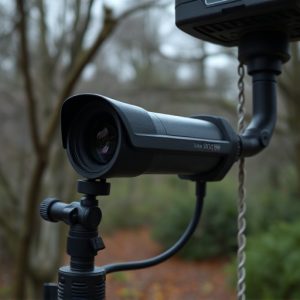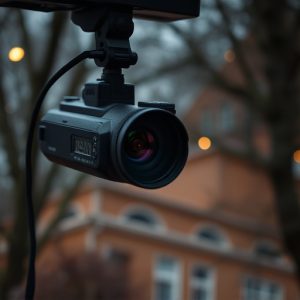Micro Cameras for Child Protection: Discreet Solutions and Ethical Guide
Micro cameras, disguised as everyday items like toys and clothing, offer a revolutionary approach to…….
Micro cameras, disguised as everyday items like toys and clothing, offer a revolutionary approach to Child Protection. Their tiny size and wireless connectivity allow remote monitoring via smartphones or computers, providing discreet observation in public spaces or homes. While effective for safety, their use requires ethical considerations, parental consent, secure data handling, and strategic installation to balance security with privacy.
Uncover the power of tiny cameras hidden within everyday objects in this comprehensive guide. We explore how micro cameras, often used for Micro Cameras for Child Protection, revolutionize monitoring while raising ethical and legal considerations. From understanding advanced technology to choosing discreet concealments, installing, maintaining, and ensuring privacy, this article navigates the intricate world of hidden surveillance. Learn how seemingly ordinary items can become powerful tools for safety and peace of mind.
- Understanding Micro Cameras: Unveiling the Technology
- Everyday Objects as Discreet Camera Concealments
- Ethical Considerations and Legal Aspects of Child Protection Cameras
- Installation, Maintenance, and Privacy Measures for Effective Monitoring
Understanding Micro Cameras: Unveiling the Technology
Micro cameras, often referred to as hidden or miniature cameras, have revolutionized surveillance and monitoring technology. These tiny devices pack a powerful punch in terms of functionality and discretion. The latest micro camera models are incredibly small, fitting seamlessly into everyday objects like toys, pens, and even clothing, making them ideal for various applications, including child protection.
With advancements in miniaturization and imaging technology, micro cameras can capture high-resolution videos and images discreetly. They offer wireless connectivity, allowing users to monitor activities remotely through compatible apps on smartphones or computers. This innovative technology is transforming the way we ensure safety and privacy, especially in situations where unobtrusive observation is crucial, such as monitoring children’s activities in public spaces or at home.
Everyday Objects as Discreet Camera Concealments
In the realm of surveillance and security, everyday objects have emerged as innovative and discreet camera concealments. From toys to household items, these seemingly innocuous items can house powerful micro cameras for child protection or home monitoring. Their small size allows them to blend seamlessly into various environments, making it possible to capture footage without raising suspicion. This tactic is particularly useful in scenarios where a subtle presence is necessary, such as in schools, daycares, or even within the home.
By integrating these tiny cameras into everyday objects, users can gain valuable insights and peace of mind. For instance, a parent might use a seemingly ordinary teddy bear to monitor their child’s playtime, ensuring their safety while fostering a sense of security. Similarly, a grandparent could employ a small camera hidden in a bookend to keep an eye on young visitors, all while maintaining the appearance of a regular home decor item. This creative approach to surveillance showcases how everyday objects can double as effective tools for observation and protection, thanks to the advancement of micro camera technology.
Ethical Considerations and Legal Aspects of Child Protection Cameras
When it comes to using micro cameras for child protection, ethical considerations and legal aspects must be at the forefront. These tiny devices offer unprecedented opportunities to safeguard our children, whether in schools, daycares, or at home. However, their use raises concerns about privacy, consent, and potential misuse. It’s crucial to balance the benefits of enhanced security with the rights of individuals, especially minors, to privacy.
Legal frameworks vary across regions, but many countries have strict regulations governing surveillance, particularly in settings where children are involved. Parents or caregivers must be informed about the presence of these cameras and obtain necessary permissions. Moreover, data collected from child protection micro cameras should be securely stored, accessed only by authorized personnel, and used exclusively for specified protective purposes to ensure the highest standards of ethical conduct.
Installation, Maintenance, and Privacy Measures for Effective Monitoring
The effective use of micro cameras for child protection requires careful consideration during installation, regular maintenance, and robust privacy measures. Firstly, strategically placing these tiny yet powerful devices within everyday objects can provide discreet monitoring. Whether hidden in a toy or incorporated into home decor, their minimal size allows for unobtrusive observation. However, proper installation goes beyond mere placement; it entails ensuring clear image quality and secure connections to ensure reliable operation.
Regular maintenance is equally vital to keep these cameras functioning optimally. This includes routine checks for any signs of damage, proper cleaning, and updating software or firmware as needed. Furthermore, privacy measures must be paramount to protect sensitive data and prevent unauthorized access. Employing robust encryption, secure storage solutions, and strict access controls help safeguard personal information. By integrating these practices, parents or guardians can effectively leverage micro cameras for child protection while maintaining a sense of privacy and security.
Micro cameras have emerged as powerful tools for child protection, offering a discreet means to ensure safety in everyday environments. By integrating these tiny camera concealment devices into common objects, we can create a more secure space for children while navigating the digital age. However, it’s crucial to balance this technology with ethical considerations and legal boundaries, especially regarding privacy rights. Responsible installation, regular maintenance, and stringent privacy measures are essential to make Micro Cameras for Child Protection an effective and acceptable solution. By understanding both the technology and its implications, we can harness its potential to create safer environments for our young ones without compromising their privacy.


